For many travellers, Kota Kinabalu (KK) is the adventure capital of the Malaysian Borneo and while the first impressions may not be very appealing on the surface, it doesn’t take more than a tickle to explore its charms. The friendly locals and the warm hospitality will instil the contended feeling of being truly appreciated in the surroundings of spectacular waters and sunsets, mountains and ancient rainforest and the diverse gastronomic spectrum combining Malay, Japanese, Western and Cantonese influences. The mystical glamour of this oriental pearl will effortlessly captivate its visitors.
On Thursday, May 11, 2017 soon after my flight from Kuala Lumpur touched down at Kota Kinabalu International Airport and made my way into the arrival hall, I noticed several rows of immigration counters facing the inbound passengers. It was very confusing and for a moment I was not sure if I should approach the counters or even not; I inquired an immigration officer at the arrival hall and informed him that I had my passport stamped the same morning at Kuala Lumpur International Airport. However, the immigration officer insisted and told me that I am still required to stamp it at Kota Kinabalu as well and directed me to the immigration counter. The process was very swift, I was not asked any questions about my purpose of travel and duration of stay in KK, my passport was stamped and I was allowed to pass through. I didn’t carry any checked luggage, so I proceeded to the exit. Getting to the city from KK airport by taxi is a popular but inconvenient topic on travel blogs. I found the counter selling bus tickets to the city near the exit gate and the fare was RM 5.00 and the frequency was every one hour.
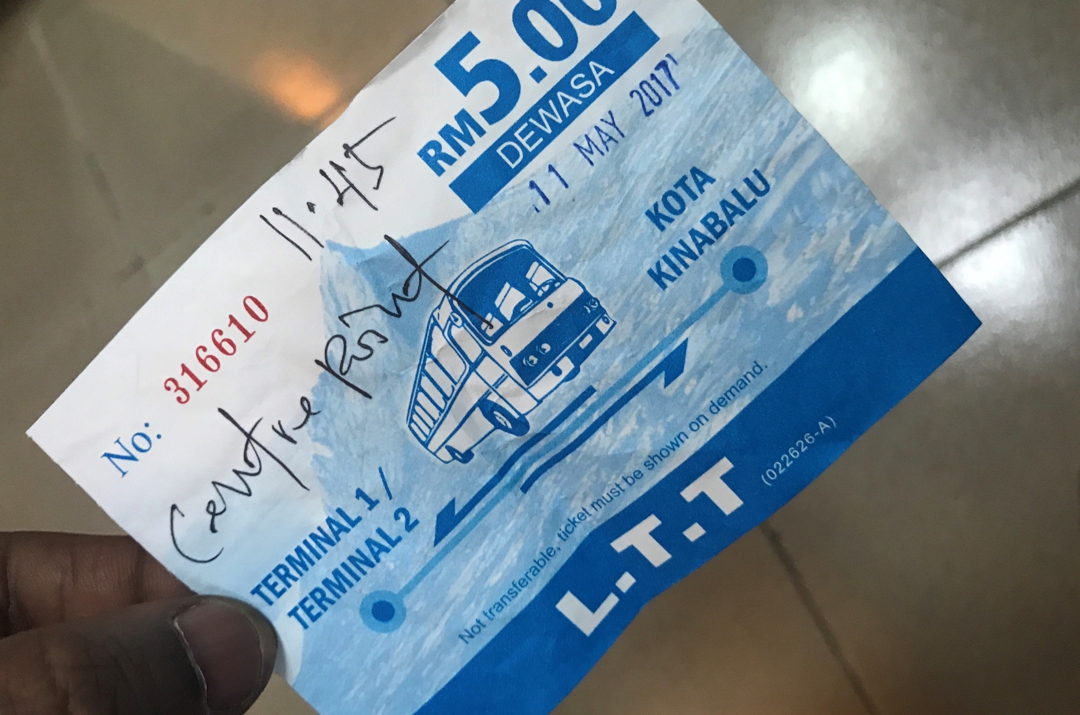
Bus ticket to the city centre
I got my bus ticket and waited outside for about 35-minutes until the bus conductor called out to collect the passengers. The bus departed at 1200 hrs and took about 25-minutes to reach Jalan Sentosa through heavy traffic, the area I booked my accommodation in KK. I had my Google Maps ON, so it was convenient for me hop off close to the hotel and take a short walk. Victoria Hotel & Hostel was 5-minutes away from Gaya Street, KK’s busy business center that has been for more than a century. The roadside shops have passed from father to son, every Sunday the entire street is shutdown from motor-traffic to make way for the popular Sunday market. The area is transformed to the perfect shopping and haggle experience, products from batik garments, fruits and vegetables, arts and craft, antiques and souvenirs, even pets and herbs are for sale at the weekly fair.
I got my room from the first floor at the Victoria Hotel, the budget hotel had friendly staff at the 24-hour reception. The room, its bathroom was clean and spotless, it had hot water equipped and the room air-condition was nice and cozy. Just like any other traveler arriving from a long journey, I was exhausted and tired because I had two flights with a 4-hour transit at KLIA totaling 12-hours prior arriving KK. I had a warm and comfortable shower and fell into a ten-hour sleep. By the time I woke up, it was about 30 minutes past 9pm, I spent the rest of the evening making plans for next day and checking my e-mails after dinner at a mamak just outside the hotel.
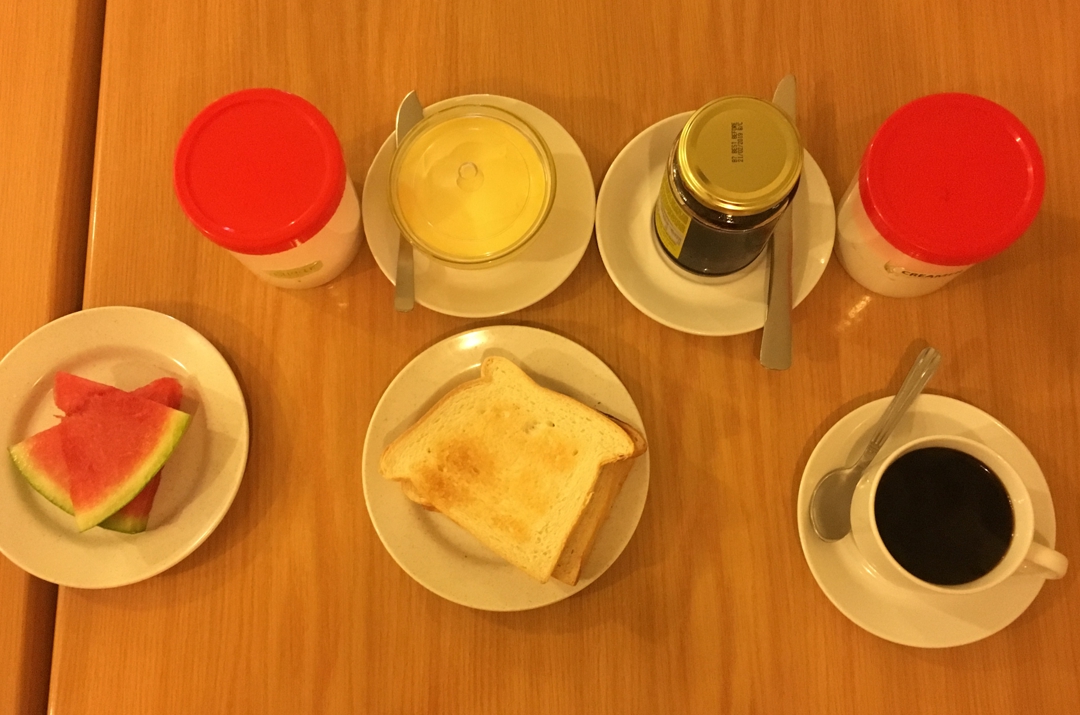
Basic breakfast at Victoria Hotel
While I’ve made plans to explore the city during the morning hours on Friday, May 12, I was up early and had my breakfast by 6.15am. The breakfast was basic and consisted of toast, jam, butter, water melon and tea/coffee. Next I booked a Grab taxi and took off to see what Kota Kinabalu was all about.
Masjid Bandaraya
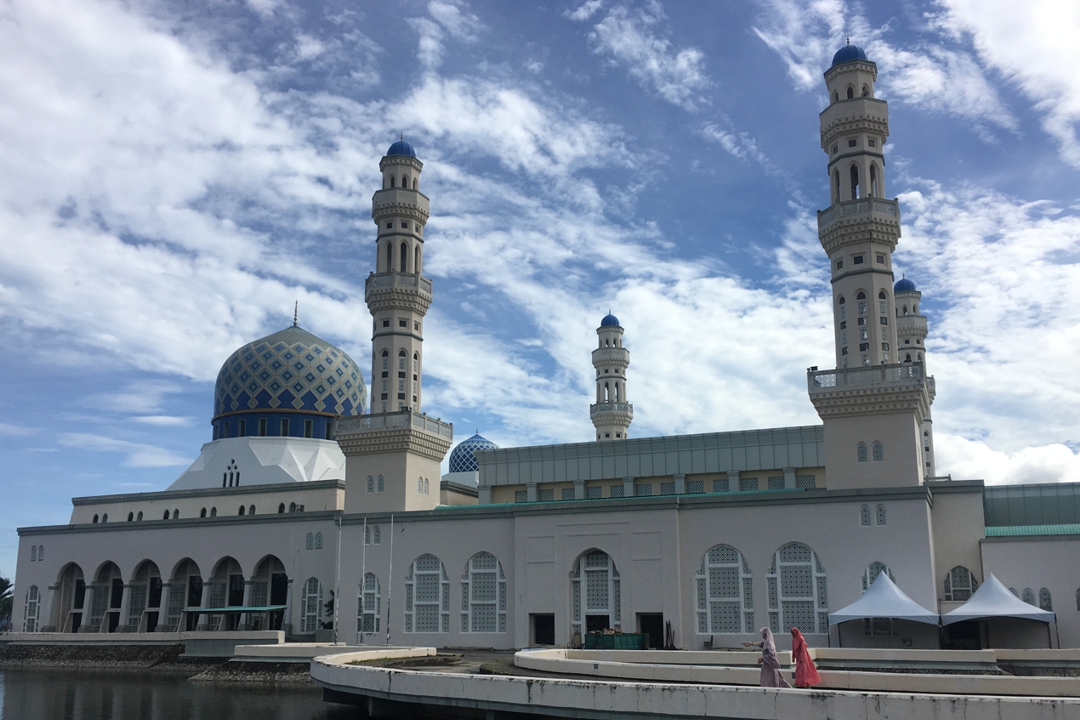
The second major mosque after the State Mosque. It was officially inaugurated on February 02, 2000, coinciding with the declaration of Kota Kinabalu as a city. Built in classical style on a man-made lagoon at Likas Bay near the South China Sea, the mosque is exemplary of the Modern Islamic calligraphy and illumination with its perfectly clean setting, design and contemporary looks, while its gold-and-blue dome is reminiscent of those typically found in the Middle East. It can accommodate 12,000 worshipers at a time and includes three madrasas. I spent almost an hour exploring inside the huge mosque, there was a separate pray area for women, I was also told certain areas inside the mosque were only allowed for Muslims, I didn’t bother justifying them that I was a Muslim, in fact I took several photographs of the interior and exterior before I left to check out the next attraction.
Atkinson Clock Tower
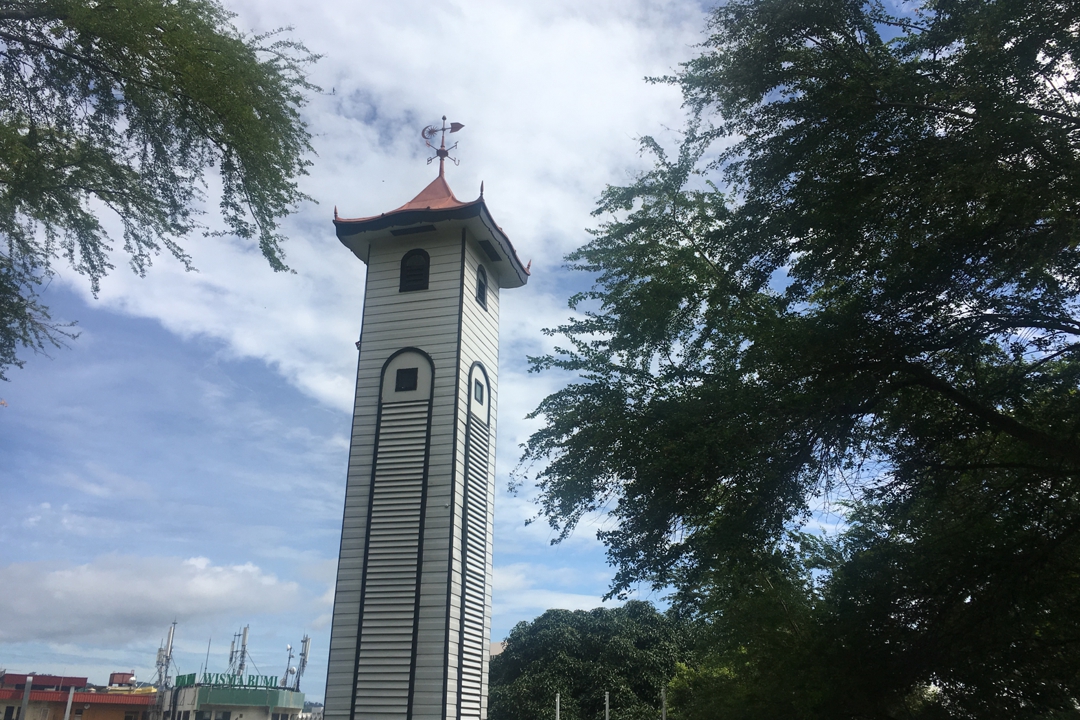
The most aged structure in Kota Kinabalu and to have survived the 1945 allied bombing of Jesselton. The modest timepiece at the foot of Signal hill is a square, 15.7m-high wooden structure that was completed in 1905 and named after FG Atkinson, the first district officer of the town, who died of malaria or ‘borneo fever’ at the age of 28 in December 1902. His mother presented the two-faced clock to Jesselton town as a memorial of her son and later the clock tower was built in his honor.
Signal Hill Observatory Tower
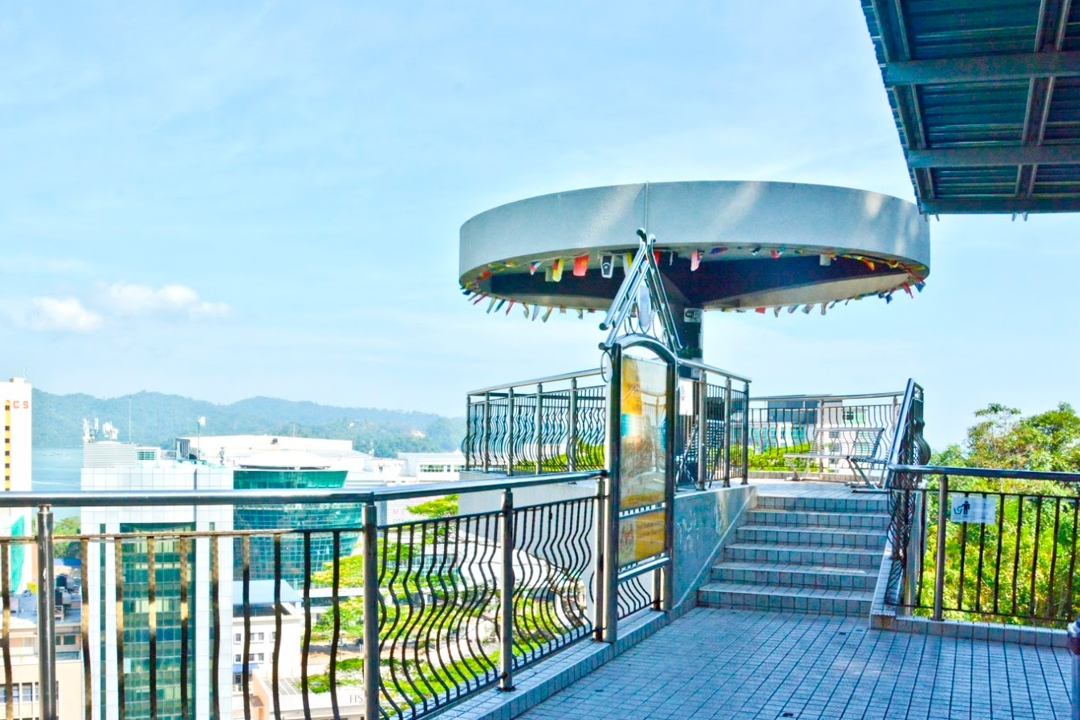
The next attraction was a platform located on the top of a small hill called “Bukit Bendera” or the Signal Hill, it was a 250 meter jungle trail to the top. The roofed observation platform had a bird’s-eye view of Kota Kinabalu, the South Chinese Sea and the surrounding islands.
By the time, I was done exploring the Signal Hill Observatory, it was about 1100 hrs and that’s when I decided to have a coffee break before heading to the Jesselton Ferry Terminal to buy ferry ticket to Sapi Island to experience the Coral flyer. It was my first zip-lining experience and will always be something I will look forward to do and try again somewhere else when I travel. I reached my hotel at about 1700 hrs, my phone battery was almost dead, I had so much to do, check my e-mails, eat dinner, attend a Couchsurfing meetup at 2100 hrs and squeeze everything into 4 hours. I had a full-day of adventure at the Kinabalu National Park and Poring Hot Spring on Saturday, May 13th, it was also my last day in Kota Kinabalu since I left to Brunei on Sunday.

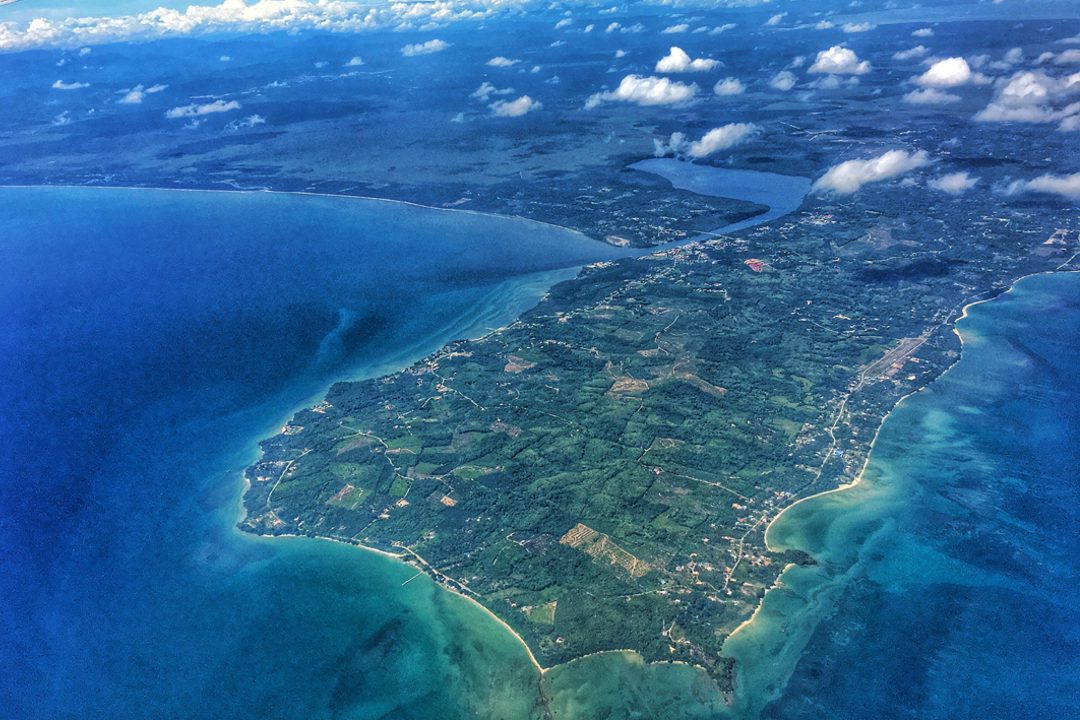
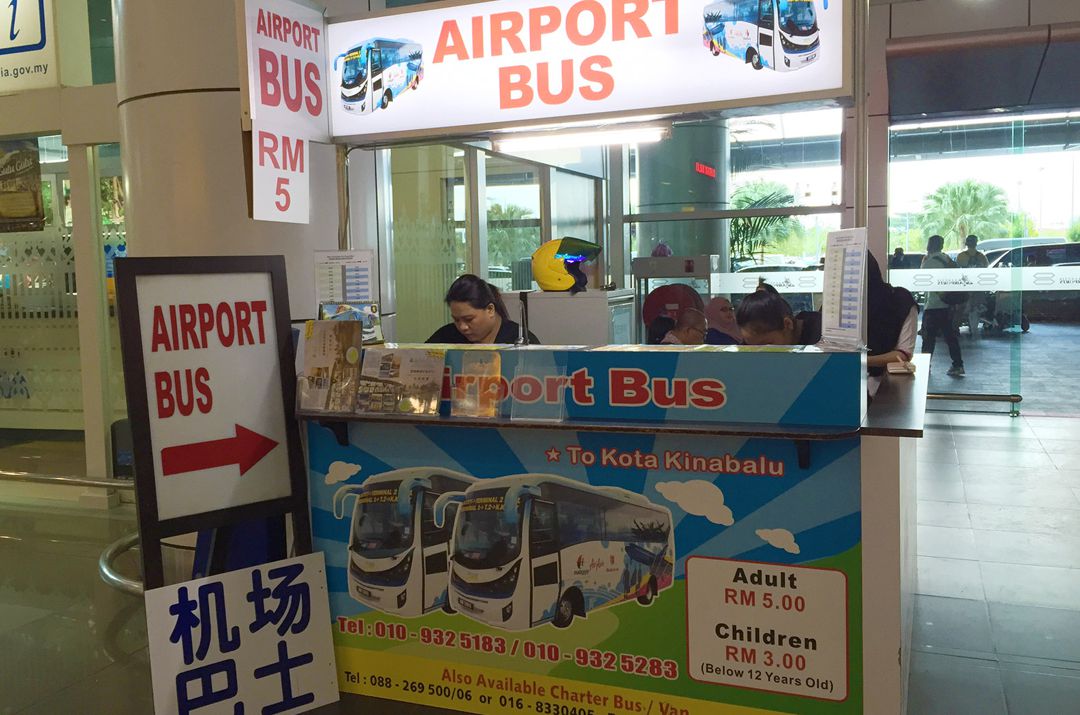
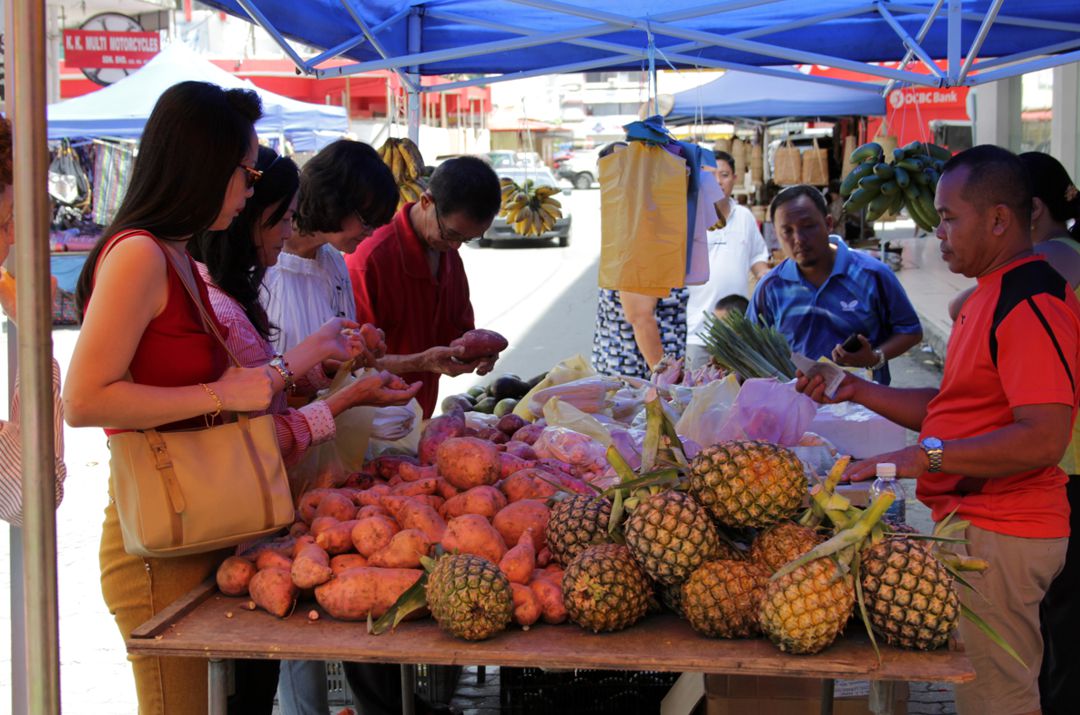
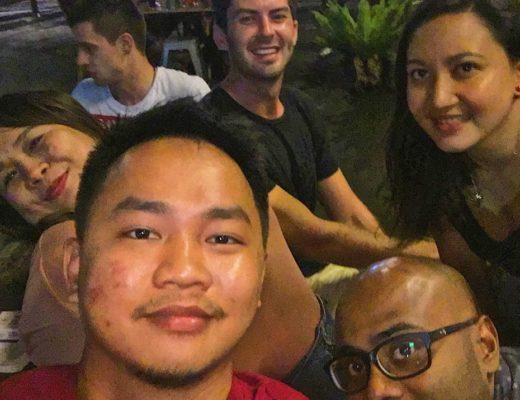
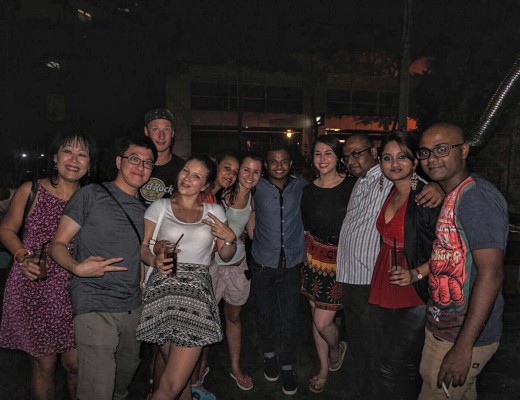
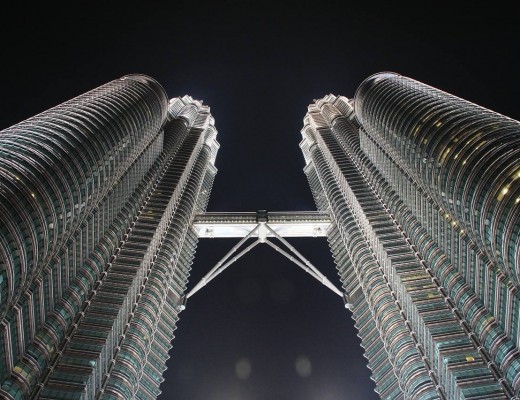
1 Comment
Nice read